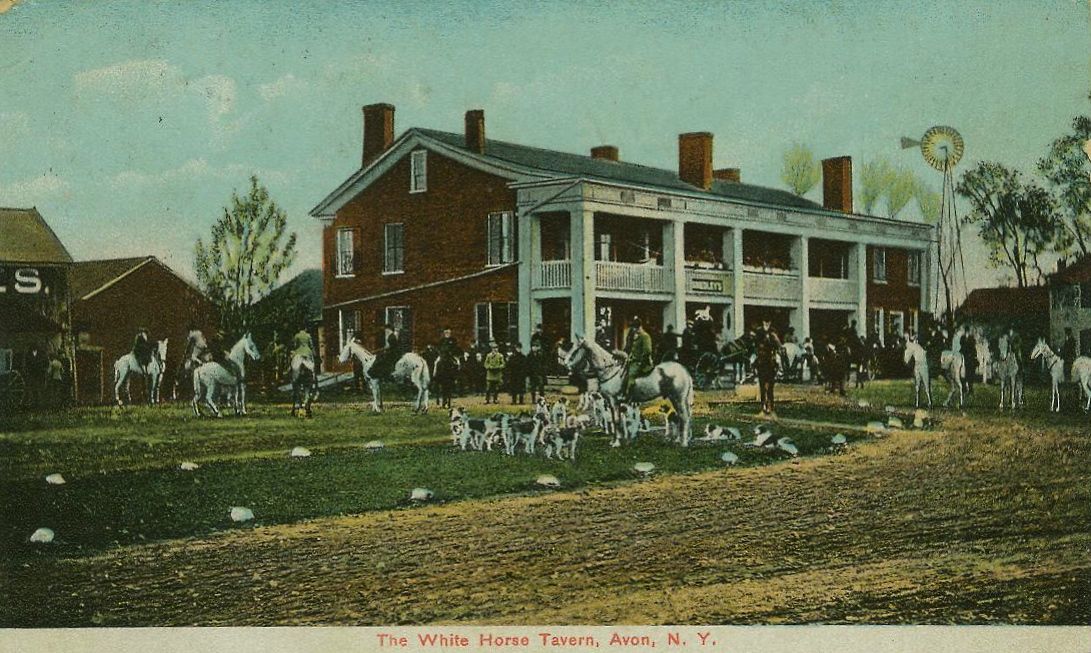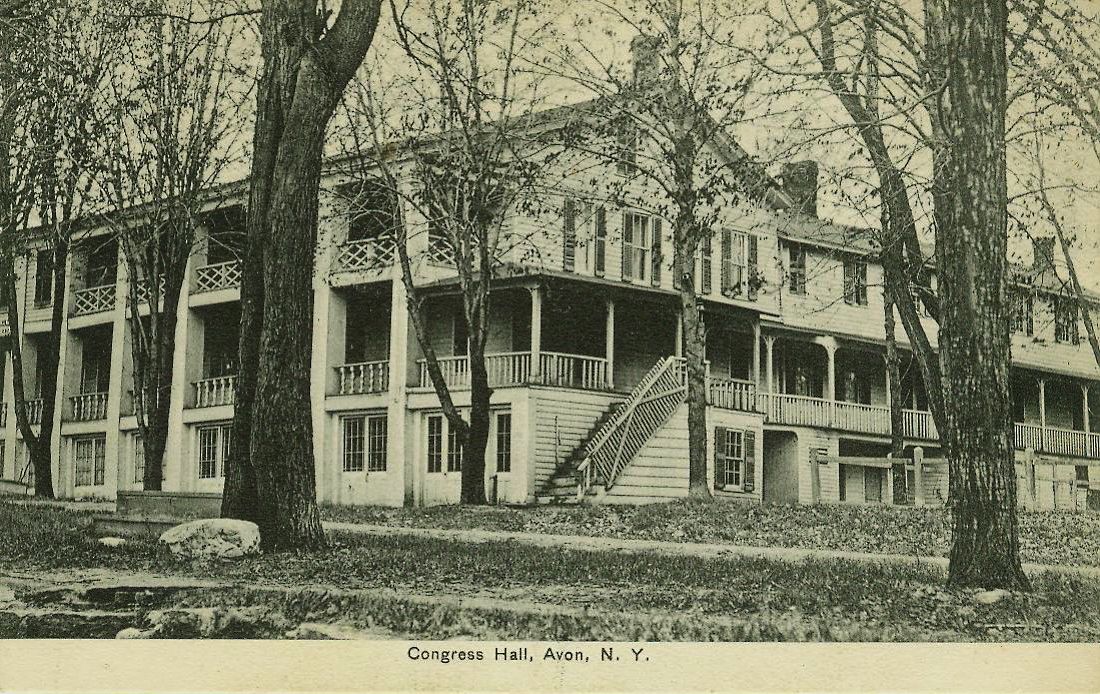The first permanent settlement was made in 1789 when Gilbert and Maria Berry built a log tavern and later operated a rope ferry over the Genesee River. Dr. Timothy Hosmer and Major Isaiah Thompson purchased the land and named the new community Hartford, a name that was later changed to Avon, in 1808. The town was formally organized in 1797, and the village was incorporated in 1853.
Historically, Avon served as both a major stagecoach crossing, due to its location at the intersection of routes 5 and 20, and also as a place of relaxation and healing due to the abundance of sulfur springs within the town’s borders. The town of Avon is located in the northern part of Livingston County, just south of Rochester, NY. As of the 2010 census, the population of Avon was 7,146.
The Spa Era
Avon Spring Downs: From 1821 until the early twentieth century, extensive health and recreational facilities graced the area to attract and accommodate guests from far and wide who came to seek relief from various maladies. The race track, which was laid out in 1836 by Captain Asa Nowlen, has remained a training track for standard bred horses, and is home to the Genesee Valley Breeders Association events.

Public House/White Horse Tavern: Located in East Avon, on the southeast corner of the main intersection, the property was built in 1812 by John Pierson. The tavern was an important early stagecoach station for travelers at the busy crossroads. Although many of the hotels in the area were popular for their sulfur springs, there was no spring at the White Horse Tavern. In 1930, a statue of a white horse was placed in front of the building by Miss Emma Rettig, owner of the tavern at the time. Although the tavern was destroyed by fire in 1955, the statue of the white horse stands on the location to this day.

American Hotel/Congress Hall: Located near the Upper Spring on the south side of Spring Street, American Hotel was built in 1827 by Nehemia Houghton. The property was later purchased by Dr. Oren Dodge Phelps. Dr. Phelps built additions and renamed the property Congress Hall. Congress Hall was enhanced by a picket fence, winding drives, and beautiful grounds. The property was destroyed by fire in 1913.

Avon Inn: Listed on the National Register of Historic Places in 1991, the Avon Inn is one of the few remaining historic inns in Avon. It was built as a residence in 1840 in the Greek Revival style, and then in expanded and remodeled in 1882 for use as a sanitarium. It was again remodeled in 1912 as an inn with a banquet hall. The third floor was lost to a fire in 1979, so again the building was remodeled in 1980. It is presently serving as a restaurant and an inn. This photo shows the third floor, which is no longer present.

The Sanitarium/The Livingston Inn: Built in 1866 by Charles Whaley, the hotel was leased in 1871 and renamed The Sanitarium. During the late 1800s, a private bank was established in the hotel to serve the local community. In 1904, the building was taken down, board by board, and moved to McPherson’s Point in Livonia, where it stood until 1982 when it was destroyed by fire. The hotel was a four story building that could accommodate 100 guests.

The Radford Hall: Located on the east side of the village circle, this three story structure was built in 1877 by William Radford. It became an apartment building in 1925, and then was sold and razed in 1930 to make way for the present gas station.

